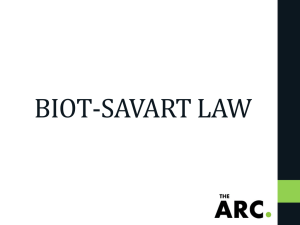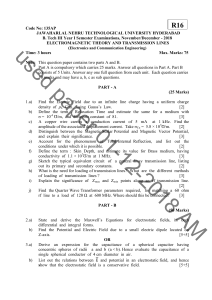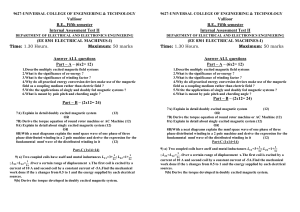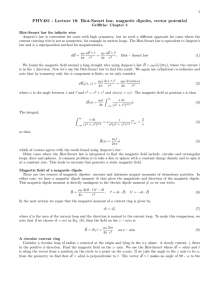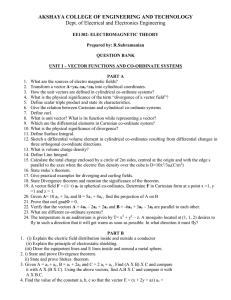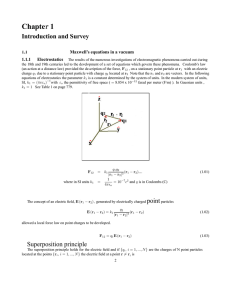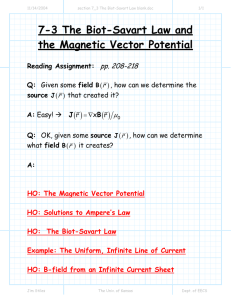LOYOLA COLLEGE (AUTONOMOUS), CHENNAI – 600 034
advertisement
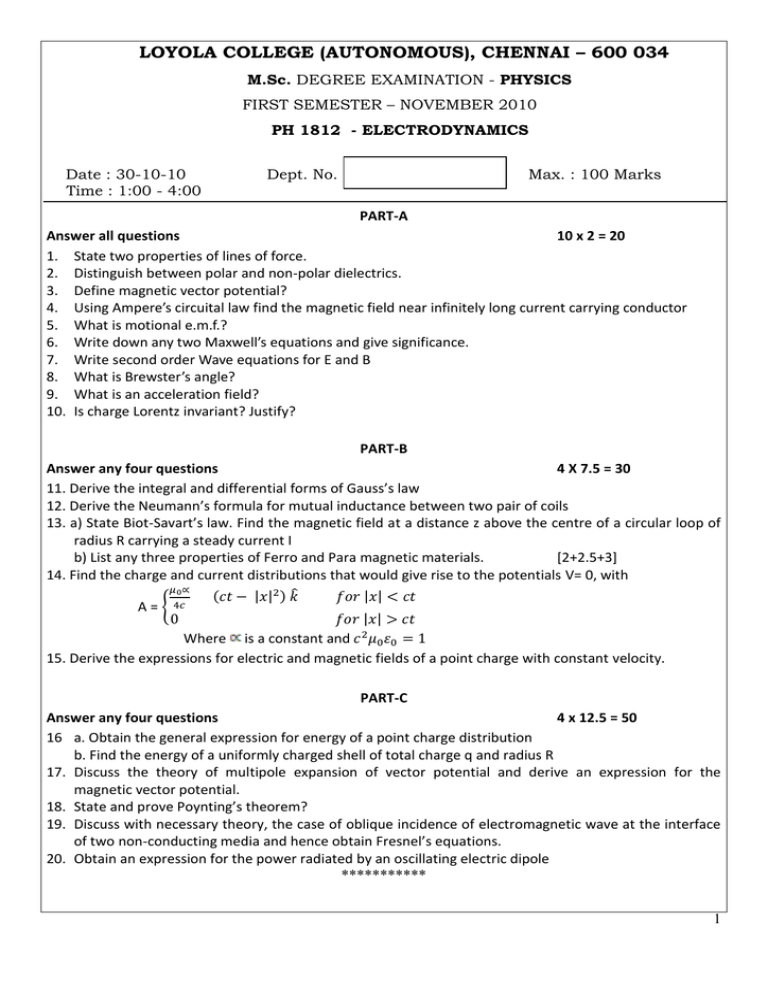
LOYOLA COLLEGE (AUTONOMOUS), CHENNAI – 600 034
M.Sc. DEGREE EXAMINATION - PHYSICS
FIRST SEMESTER – NOVEMBER 2010
PH 1812 - ELECTRODYNAMICS
Date : 30-10-10
Time : 1:00 - 4:00
Dept. No.
Max. : 100 Marks
PART-A
Answer all questions
10 x 2 = 20
1. State two properties of lines of force.
2. Distinguish between polar and non-polar dielectrics.
3. Define magnetic vector potential?
4. Using Ampere’s circuital law find the magnetic field near infinitely long current carrying conductor
5. What is motional e.m.f.?
6. Write down any two Maxwell’s equations and give significance.
7. Write second order Wave equations for E and B
8. What is Brewster’s angle?
9. What is an acceleration field?
10. Is charge Lorentz invariant? Justify?
PART-B
Answer any four questions
4 X 7.5 = 30
11. Derive the integral and differential forms of Gauss’s law
12. Derive the Neumann’s formula for mutual inductance between two pair of coils
13. a) State Biot-Savart’s law. Find the magnetic field at a distance z above the centre of a circular loop of
radius R carrying a steady current I
b) List any three properties of Ferro and Para magnetic materials.
[2+2.5+3]
14. Find the charge and current distributions that would give rise to the potentials V= 0, with
𝜇0 ∝
(𝑐𝑡 − |𝑥|2 ) 𝑘̂
𝑓𝑜𝑟 |𝑥| < 𝑐𝑡
A = { 4𝑐
0
𝑓𝑜𝑟 |𝑥| > 𝑐𝑡
Where is a constant and 𝑐 2 𝜇0 𝜀0 = 1
15. Derive the expressions for electric and magnetic fields of a point charge with constant velocity.
PART-C
Answer any four questions
4 x 12.5 = 50
16 a. Obtain the general expression for energy of a point charge distribution
b. Find the energy of a uniformly charged shell of total charge q and radius R
17. Discuss the theory of multipole expansion of vector potential and derive an expression for the
magnetic vector potential.
18. State and prove Poynting’s theorem?
19. Discuss with necessary theory, the case of oblique incidence of electromagnetic wave at the interface
of two non-conducting media and hence obtain Fresnel’s equations.
20. Obtain an expression for the power radiated by an oscillating electric dipole
***********
1

